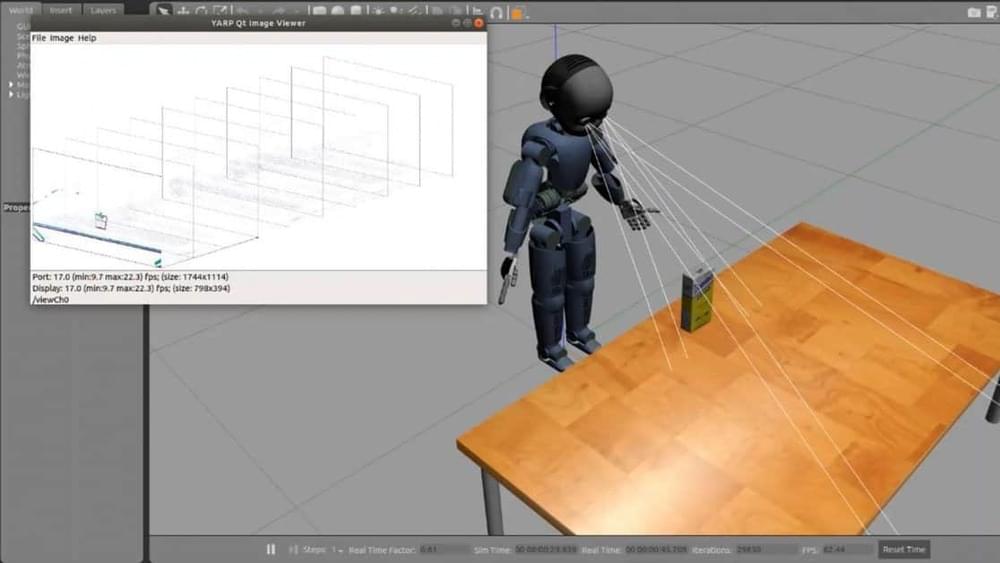2nd launch attempt scrubbed.
A fuel leak forced NASA to call off its second attempt to launch the Artemis 1 moon mission on Saturday (Sept. 3).

A combination of cutting-edge hardware, sensor technology, and bespoke machine learning approaches can predict trajectories of vehicles, people, and even animals, as far as 8 seconds into the future.

As space travel for recreational purposes is becoming a very real possibility, there could come a time when we are travelling to other planets for holidays, or perhaps even to live. Commercial space company Blue Origin has already started sending paying customers on sub-orbital flights. And Elon Musk hopes to start a base on Mars with his firm SpaceX.
This means we need to start thinking about what it will be like to live in space – but also what will happen if someone dies there.
After death here on Earth the human body progresses through a number of stages of decomposition. These were described as early as 1,247 in Song Ci’s The Washing Away of Wrongs, essentially the first forensic science handbook.

Scientists have worked out how to use an infrared laser to charge devices at a distance. The system can deliver up to 400 milliwatts of power up to a distance of 30 meters (100 feet). That amount of power is sufficient to charge small sensors and other tech, and with developments, it could be possible to charge mobile devices too.
The work, published in the journal Optics Express, focused on a method called distributed laser charging. They showed that an infrared laser (whose wavelength can’t harm skin or eyes) was shined through a spherical ball lens towards a device with a photovoltaic receiver of 10 by 10 millimeters (0.4 by 0.4 inches).
The receiver is small enough to be attached to many mobile devices and sensors, and the team showed that it was able to convert 400 milliwatts to 85 milliwatts of electrical power. A small but significant result.

A team of Japanese and US physicists has pushed thousands of Ytterbium atoms to just within a billionth of a degree above absolute zero to understand how matter behaves at these extreme temperatures. The approach treats the atoms as fermions, the type of particles like electrons and protons, that cannot end up in the so-called fifth state of matter at those extreme temperatures: a Bose-Einstein Condensate.
When fermions are actually cooled down, they do exhibit quantum properties in a way that we can’t simulate even with the most powerful supercomputer. These extremely cold atoms are placed in a lattice and they simulate a “Hubbard model” which is used to study the magnetic and superconductive behavior of materials, in particular the collective motion of electrons through them.
The symmetry of these models is known as the special unitary group, or, SU, and depends on the possible spin state. In the case of Ytterbium, that number is 6. Calculating the behavior of just 12 particles in a SU Hubbard model can’t be done with computers. However, as reported in Nature Physics, the team used laser cooling to reduce the temperature of 300,000 atoms to a value almost three billion times colder than the temperature of outer space.

Researchers at Intel Labs, in collaboration with the Italian Institute of Technology and the Technical University of Munich, have introduced a new approach to neural network-based object learning. The new approach specifically targets future robotics applications like robotic assistants that interact with unconstrained environments, which are present in situations such as logistics and healthcare.
The new research can prove crucial for improving the service or manufacturing capabilities of our future robots.
The research paper titled “Interactive continual learning for robots: a neuromorphic approach” was awarded “Best Paper” at the 2022 International Conference on Neuromorphic Systems (ICONS) hosted by Oak Ridge National Laboratory.
Scientists will soon begin a clinical trial for a new liver disease treatment. The experimental treatment will hopefully help treat end-stage liver disease and reduce liver transplants. To do this, it will harness the natural regenerative power of the liver by growing an entirely new liver within the patient. It won’t just rely on one new liver, either. Instead, patients will grow multiple tiny livers in their bodies.
The process, which has shown success in mice, pigs, and dogs, involves injecting healthy liver cells into the patient’s lymph nodes. The cells then multiply inside the patient’s body, growing into tiny functioning versions of the larger organ. It’s an intriguing treatment for liver disease, and so far, it has improved liver function in animals that have received the treatment.
The clinical trial focuses on using the lymph nodes in the patients to create bioreactors that can grow the new livers. Not only would this give people dealing with liver disease more options, but it would also relieve pressure on an already overloaded transplant system. New Atlas reports that the participants will be divided into three primary groups.
Researchers from the University of California of Berkeley transfused the blood of older mice into younger mice! This caused accelerated aging: Abstract in the youtube description.
On November 15, 2018, BCG GAMMA and Brahe Education Foundation hosted a lecture with Max Tegmark who spoke of Life 3.0 and the future of Artificial Intelligence including both its possibilities and also risks. What kind of future do we want to live in and how can we steer AI towards it? Max Tegmark is a Professor of Physics at MIT, co-founder of the Future of Life Institute, and Scientific Director of the Foundational Questions Institute.

Thermoelectric devices convert thermal energy into electricity by generating a voltage from the difference in temperature between the hot and cold parts of a device.
To better understand how the conversion process occurs at the atomic scale, researchers used neutrons to study single crystals of tin sulfide and tin selenide. They measured changes that were dependent on temperature.
The measurements revealed a strong correlation between changes in the structure at certain temperatures and the frequency of atomic vibrations (phonons). This relationship affects how the materials conduct heat.